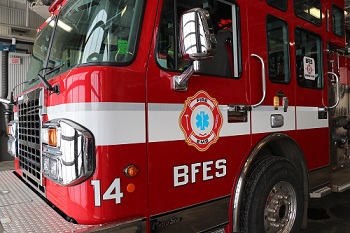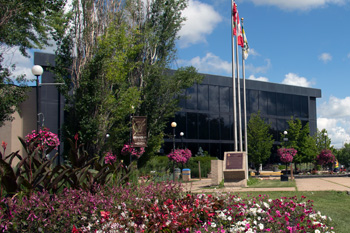Introduction
The Industrial Wastewater Treatment Facility consists of an aerobic reactor, an aeration basin, a clarifier and a disinfection facility.
Anaerobic Reactor
Anaerobic treatment reduces the organic pollutants in wastewater into a small amount of sludge and a large amount of biogas consisting of methane gas and carbon dioxide. The process works by crating an environment that is devoid of air, which promotes the growth of anaerobic organisms that survive without oxygen. These organisms break down the organic wastes into less complex substances. The anaerobic basin is a large basin constructed of earth and lined and covered with an air tight material. The biogas generated is withdrawn from the basin and is used as a fuel source in a hot water heater. Once the partially treated wastewater leaves the anaerobic reactor it enters the aeration basin.
Aeration Basin
Aerobic treatment of waste is the natural biological degradation and purification process in which bacteria that thrive in oxygen-rich environments break down and digest the waste. The aeration basin is a large concrete tank, which houses three aerators that add air, and therefore oxygen, into the partially treated wastewater. The effluent from the aeration basin then enters the clarifier.
Clarifier
The clarifier reduces the solids content of the wastewater by physical means. The solids in the wastewater are allowed to settle in the clarifier and are removed and returned into the anaerobic reactor.
The clarifier is a round concrete tank that contains a mixing device and a scum removal device. The bottom of the clarifier is cone shaped and includes a sump, which allows for the collected solids to be pumped.
Disinfection
The partially treated effluent from the clarifier is then sent to the disinfection facility for disinfection utilizing ultraviolet light technology. Once the effluent has passed through the UV facility it is ready for final disposal into the Assiniboine River.







